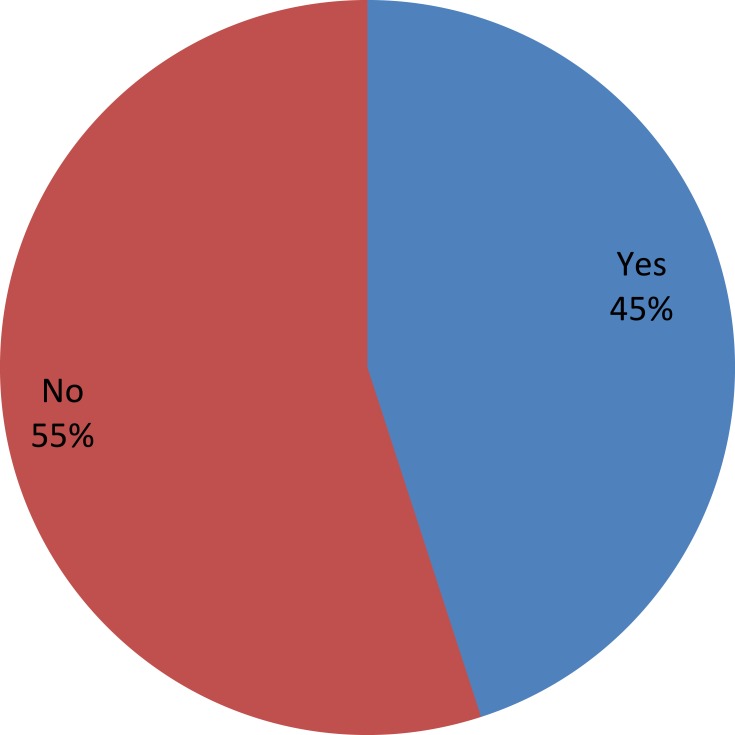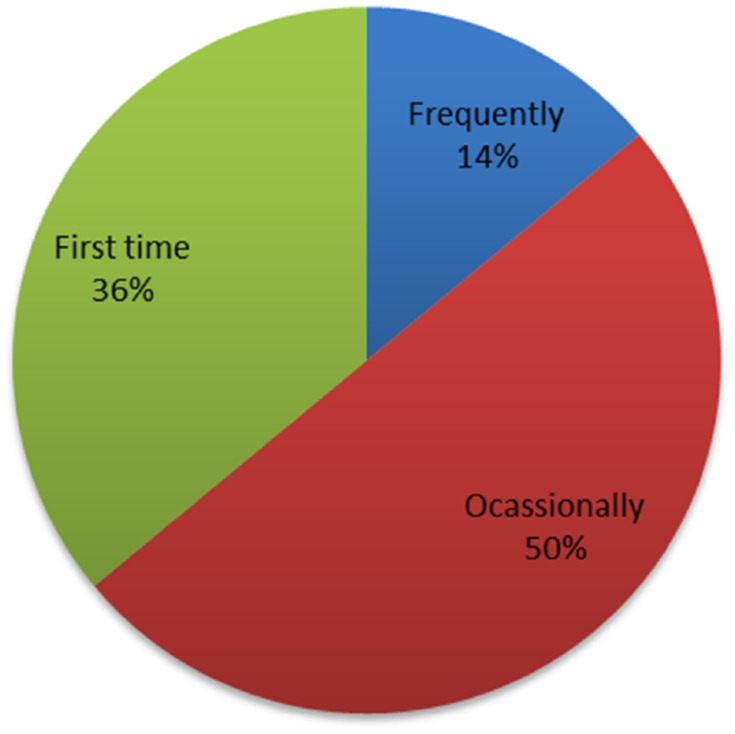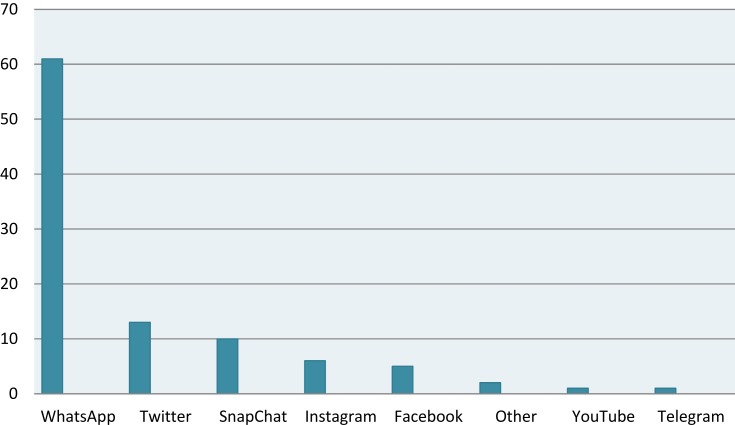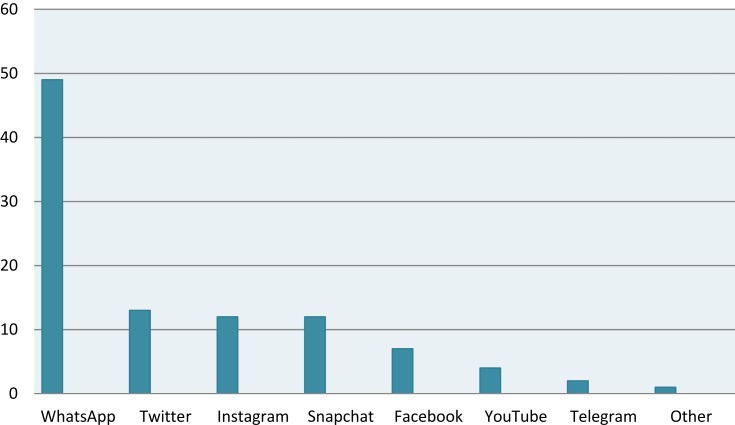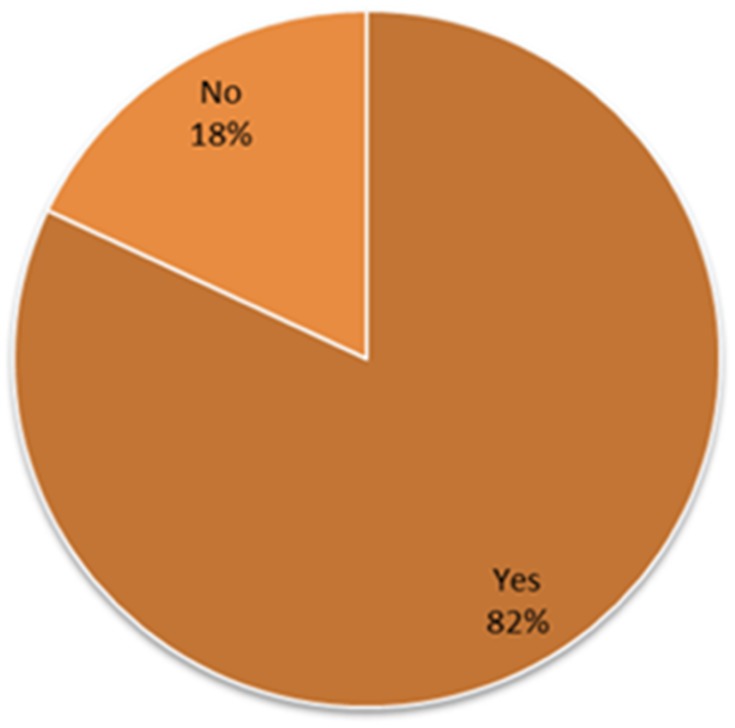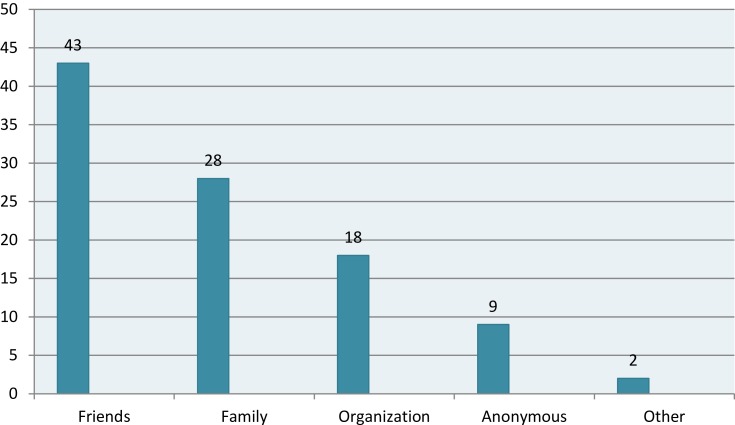Abstract
Purpose
The main objective of this research was to investigate the use of social media in the blood donation process in Saudi Arabia. In addition, other objectives were to evaluate inhibitors, motivations and the possibility of using social networks to improve the practice of blood donation in this country.
Participants and methods
A cross-sectional study was carried out to investigate the use of social media in the blood donation process in Saudi Arabia.This study was conducted using an online survey questionnaire distributed through Whatsapp groups to 297 participants between November and December, 2018. Question Pro was employed during the data collection process. Basic descriptive statistics was used to analyze the data.
Results
Almost half of the participants (45%) had previously donated blood and most of them (82%) received requests for blood donation through social media platforms in Saudi Arabia. The most used social media platforms for this purpose were WhatsApp (61%) followed by Twitter (13%), Snapchat (10%), Instagram (6%), Facebook (5%), YouTube (1%), Telegram (1%), and others (2%). The sources of posts that requested blood donation were mainly from friends (43%) and family members (28%). Furthermore, 25% of the respondents considered that human solidarity was the principal motivation to donate blood, and 36% of them expressed that the main inhibiting factor was their health condition. The results insinuated that there is a potential to improve the blood donation practice in Saudi Arabia using social media.
Conclusion
The outcomes of this study indicated that social media had been used to search for blood donors using messages distributed through these platforms in Saudi Arabia, and WhatsApp was the preferred social media to transmit and receive information about the blood donation process. Human solidarity was the most important incentive to donate blood, while the health condition was the main inhibitor. The findings suggested that social media can help to improve the blood donation practice in this country where there is a shortage of blood donors.
Keywords: blood donation, social media, motivation, inhibitor
Introduction
In general, due to the lack of a firm blood donation system, most health care organizations depend on the general population to obtain a sufficient blood supply. Therefore, most of the time patients and their families are in the stressful need to initiate donation requests using various alternatives such as social media.
In this sense, social media platforms can contribute to blood donation as reported by several studies conducted in connection with this issue.1–5 In this regard, Sümnig et al investigated the importance of social media in blood donors recruitment; Abassi et al conducted a study on the use of Twitter to request blood donation in India; Shah et al has shown the impact of e-mails, short text messages and social media in the recruitment of blood donors; Rodrigues et al studied the effectiveness of the use of WhatsApp in Brazil, and Siromani suggested the use of Whatsapp as a tool to motivate and recruit blood donors.1–5
In the same way, social media such as Facebook, Twitter, WhatsApp, Instagram, YouTube, among others, offer their platforms to encourage blood donation in different countries and institutions of the world: England, India, Iraq, Bangladesh, Pakistan, USA, Scotland, New Zeeland, Brazil and other countries.6–17
Transmissions and publications on social networks promote blood donation due to their contribution to finding blood donors on time. The most notable international example of the use of social networks in blood donation is in the United Kingdom where the number of blood donors has decreased significantly and the authorities are concerned about the availability of blood.18 For this reason, institutions such as the National Health Service (NHS) have been involved in initiatives to increase the blood supply in the United Kingdom and have obtained positive results in their efforts. One of the initiatives was aimed at young people aged 17 to 24 who are needed to keep the future of blood donation. The NHS took advantage of the National Blood Week to sensitize the target group and create a positive trend about the blood donation initiative.18 It is essential to bear in mind that a campaign of this kind played a key role in improving the blood supply in England.
As for Saudi Arabia, the availability of blood is insufficient and there is a gap between demand and supply due to population growth. Most of the health authorities in Saudi Arabia are focusing on this concern to ensure that there is sufficient blood supply in the health institutions of this country. With this intention, the Ministry of Health of Saudi Arabia recently launched an application “Wateen” to raise awareness among the population about voluntary blood donation and provide the blood banks of Saudi Arabia with adequate quantities of blood by the year 2020.19 Wateen is linked to the SMS system and can generate SMS for donors of the requested blood categories. In addition to Wateen, there are several groups on Twitter, such as friends of the blood bank society, who spend their time promoting blood donation and finding the possible donor for a patient who may be in trouble.
On the other hand, in Saudi Arabia, there have been no studies regarding the use of social media to promote the donation of blood in the population. In this sense, the main objective of this research was to investigate the use of social media in the blood donation process in Saudi Arabia. In addition, other objectives were to evaluate inhibitors, motivations and the possibility of using social networks to improve the practice of blood donation in this country.
Methodology
Study Settings and Participants
A cross-sectional study was carried out to investigate the use of social media in the blood donation process in Saudi Arabia. In this research, we designed a questionnaire survey using a quantitative methodology to ensure a proper understanding of the use of social media in the blood donation practice in this country. The target population was healthy adults eligible for blood donations, and the sample size was 297 participants.
The participants were made aware of the study objective, which was considered a way of ensuring that they answer all the questions objectively. Also, they were notified that their participation in the process was voluntarily, and were not under any obligation to answer questions that they did not understand or felt uncomfortable to answer. All the questions were scrutinized to ensure that they were sensitive and would not have any undermining impacts on the participants’ beliefs and other interests. The completion of the questionnaire was considered to imply informed consent to participate in the study, and the ethical approval was obtained from the Institutional Review Board of the Imam Abdulrahman Bin Faisal University.
Inclusion and Exclusion Criteria
In the study were included all people from Saudi Arabia even the ones who didn´t donate. There was no exclusion criterion.
Description of the Questionnaire
The questionnaire was designed by the research team and included 12 sets of close-ended questions with multiple choices that the respondents were required to choose between the available options. Also noteworthy, in some of the questions, the participants were allowed to choose more than one choice among the ones that had been provided. In order to ensure that the participants could actively engage in the process, the questions were designed in a straightforward format in order to minimize errors in the findings. In addition, some of the questions incorporated the entry “other” where participants could notice that their answer was not among the entries. The questionnaire reliability was demonstrated using a pilot scale of 10 participants. The questionnaire survey is shown in Appendix 1.
The questionnaire was divided into three sections. The first section consisted of two questions about demographic data of the participants: (i) What is your gender (male, female)?; (ii) What is your age group in years (18–21, 22–32, 33–43, 44–65, >65)? The second section contained three questions about the participants’ history as blood donors, motivations and inhibitors to donate blood: i) Did you donate blood before (yes, no)?; (ii) What is your motivation to donate (relative or a friend need blood, urgent call for blood, seeing or receiving an advertising campaign, friends or relatives are blood donors and they encourage me, humane solidarity, personal satisfaction of helping others, beneficial to my health, and, my blood type is rare and thus always necessary) ? (iii) What are your inhibitors to donate (fear of needles, fear of infectious disease transmission, the sight of blood is unpleasant, they give nothing in return, I can´t donate due to my health condition, I have been deferred from donation before)? And, the third section comprised seven questions about the use of social media in the blood donation process in Saudi Arabia: (i) What social media do you use frequently (WhatsApp, Twitter, Snapchat, Instagram, Facebook, YouTube, Telegram, and others)?; (ii) Did you ever receive broadcasts or see a post or campaigning requesting for blood donation on social media (yes, no)?; (iii) How frequent did you receive a broadcast or read a post requesting for blood donation on the social media (first time, frequently, occasionally)?; (iv) At which social media did you receive the blood donations requests more often (WhatsApp, Twitter, Snapchat, Instagram, Facebook, YouTube, Telegram. and others)?; (v) What social media do you prefer to receive and transmit blood donations requests or campaign advertisements (WhatsApp, Twitter, Snapchat, Instagram, Facebook, YouTube, Telegram, and others) ?; (vi) What are the sources of broadcasts or post from which you receive the requests of blood donation (friends, family, organizations, anonymous, others)?; (vii) What is your most likely response when you receive the blood donation request on social media (nothing, share it with others, it encourages me to donate blood only, I would like to donate but I can´t because of health problems, other)? The questionnaire was translated into Arabic language to be comprehensive for most of the participants' group.
Data Collection
The questionnaire was conducted online, and in order to ensure objectivity, clarity, and error-free data collection a third-party tool, Question Pro, was used for the data collection process. Essentially, this platform is a web-based survey application that is utilized by companies for the purpose of polls and surveys. In addition, this tool incorporates some inbuilt templates that help in personalizing surveys such as the one designed in this study related to blood donation and social media platforms. The survey was distributed through WhatsApp groups.
In this research, the information that was collected from the study was fed into the system. The platform was comprehensive in noting the number of people who viewed the survey prompt, the one who started the process, and the participants who dropped out from the process before completion. Each of the question categories was outlined by graphical information noting the overall preferences across all the question subsets as had been noted by the participants on the questionnaires. The data collection was carried out between November 22 and December 14, 2018.
Statistical Analysis
A basic descriptive statistical analysis in terms of percentages was carried out in this study.
Results
The demographic information of a sample size of 297 participants is shown in Table 1. According to this table, the number of males who participated in the study was (54%), while the female was (46%). In addition, the age of the majority of the participants (66%) was below 43 years old. Also, Figure 1 shows that 45% of the population of this group had previously donated blood, while the rest of them (55%) noted that they had never participated in a blood donation process.
Table 1.
Demographic Information of the Participants (n=297)
| Gender | % |
|---|---|
| Male | 54 |
| Female | 46 |
| Age Group (Years) | |
| 18–21 | 2 |
| 22–32 | 22 |
| 33–43 | 41 |
| 44–65 | 34 |
| >65 | 1 |
Figure 1.
Blood donation by the participants (n= 297).
Regarding blood donation frequency, Figure 2 depicts that 14% of the participants donated blood “Frequently”, while 50% marked that they did so “Occasionally”. It is also noteworthy that 36% of the number expressed that they were first-time donors.
Figure 2.
Blood donation frequency (n=297).
With respect to the motivations behind the blood donation process, Table 2 shows that 25% of the subjects stated that they donated blood as a sense of human solidarity. This number was followed by the 17% of the participants who noted that they only donate for relatives, and the 16% indicated that they donated blood when there is an urgent call for blood (crises). The rest of the respondents donated blood for other reasons shown in this table.
Table 2.
Motivation to Donate Blood (n=297)
| Motivation | % |
|---|---|
| A relative or a friend need blood | 17 |
| Urgent call for blood | 16 |
| Seeing or receiving an advertising campaign | 5 |
| Friends or relatives are blood donors and they encourage me | 4 |
| Humane solidarity | 25 |
| Personal satisfaction of helping others | 20 |
| Beneficial to my health | 11 |
| My blood type is rare and thus always necessary | 3 |
Related to the “Inhibitors to donate”, Table 3 indicates that 36% of the respondents stated that they did not donate blood because of their health condition, and 1% of them pointed out that they did not engage in the process because they did not get anything in return. As well, pertinent, 11% noted that they did not participate because of the fear of feeling dizzy, while 14% find hospitals unpleasant.
Table 3.
Blood Donation Inhibitors (n=297)
| Inhibitors | % |
|---|---|
| Fear of needles | 7 |
| Fear of infectious disease transmission | 10 |
| The sight of blood is unpleasant | 5 |
| Fear of feeling dizzy or sick | 11 |
| Going to health centers is unpleasant | 14 |
| They give nothing in return | 1 |
| I can´t donate due to my health condition | 36 |
| I have been deferred from donation before | 16 |
Another relevant part of the investigation was to assess the social media platforms through which the participants received the prompt for blood donation. In this sense, Figure 3 shows that the most used social media platform for this purpose were WhatsApp (61%) followed by Twitter (13%), Snapchat (10%), Instagram (6%), Facebook (5%), YouTube (1%) and Telegram (1%), and others (2%).
Figure 3.
Social media used to receive blood donation requests (n=297).
Similarly, Figure 4 displays the social media preferred to receive and transmit campaigns information and blood donation requests. Again, the majority of the participants (49%) preferred the WhatsApp application. Next follows, Twitter (13%), Snapchat (12%), Instagram (12%), Facebook (7%), YouTube (4%), Telegram (2%) and others (1%).
Figure 4.
Social media preferred to receive and transmit blood donation requests (n=297).
In addition, Figure 5 depicts that most of the respondents (82%) reported that they had received broadcasts, post or campaigns for blood donation programs from social media platforms. The rest of them had not received such information.
Figure 5.
Participants who have received blood donation posts from social media (n=297).
Also, in Table 4 is shown that 67% of the participants expressed that once in a while they had received broadcasts and posts requesting blood donation on social media. The frequency of receiving broadcasts or posts in other cases are described on the table.
Table 4.
Frequency of Receiving Posts Requesting Blood Donation on Social Media (n=297)
| Frequency | % |
|---|---|
| Never | 3 |
| Once in a while | 67 |
| About half of the time | 7 |
| Most of the time | 12 |
| Always | 11 |
Furthermore, Figure 6 illustrates the sources of broadcasts or posts that requested blood donation. According to this figure, most of the participants (43%) were “Friends”, while “Other” was the least source of broadcasts or posts.
Figure 6.
Sources of broadcasts or posts requests for blood donations a (n=297).
The last question of the survey inquired about the participants’ response after receiving the blood donation request. Here, Table 5 shows that 37% of the participants shared the information with friends followed by 28% of them who noted that it encourages them to donate and share the information with other people. Also, 2% of the respondents marked the response “Other”.
Table 5.
Responses After Receiving Blood Donation Request on Social Media (n=297)
| Responses | % |
|---|---|
| Nothing | 15 |
| Share it with others | 37 |
| It encourages me to donate blood only | 6 |
| It encourages me to donate blood and I do share it with others | 28 |
| I would like to donate but I can´t because of health problems | 12 |
| Other | 2 |
Discussion
Based on the described results, it is evident that social media plays a significant role in terms of looking for blood donors using broadcasts, posts and campaigns distributed through these platforms in Saudi Arabia. This evidence is confirmed considering the information provided in Figure 5 where it can be observed that most of the participants in Saudi Arabia have received posts and announcements requesting blood donation messages through social media. This finding suggests that social media are potentially useful to promote blood donation programs to high proportions of the population in this country.
With regard to receiving the blood donation requests, Figure 3 indicates that Whastapp was the social media most used by the participants for this purpose. This is not surprising because WhatsApp was the social media with the highest penetration rate among the population in Saudi Arabia, according to statistics for the year 2017.20 The participants also used other social media to receive blood donation requests in the following decreasing order: Twitter, Snapchat, Instagram, Facebook, YouTube and Telegram. It can be detected that Twitter and Facebook were relatively less utilized than Whatsapp for blood donation purposes. As noted by Shah et al such platforms as Facebook and Twitter are perceived as business platforms, which undermines their dependency as effective channels to get blood donation information.3
Similarly, according to Figure 4, the participants considered that WhatsApp was the preferred social media to receive and transmit blood donation requests and information about campaigns related to the blood donation process. Also, Figure 6 shows that the majority of the sources of broadcasts and posts were from friends and family.
On the other hand, the participants expressed their opinion about the motivations they had to donate blood and the factors that inhibited this process. In this sense, according to Tables 2 and 3, a quarter of the participants considered that the motivation to donate blood was the feeling of human solidarity, and almost a third of them said they did not donate blood and were inhibited due to their health conditions. In the same way, according to Table 5, almost a third of the participants expressed that after the donation process they shared the information with other people.
According to these results, it could be possible to implement an effective blood donation program in Saudi Arabia using social media platforms. Also, the outcomes of this research indicated that the popularity of Whatsapp is important and critical to ensure the effectiveness of any project aimed at promoting blood donation in Saudi Arabia. In this regard, it would be beneficial to prioritize the blood donation program through the WhatsApp groups and, at the same time, to focus on the rest of the platforms to attract more donors. In addition, the process would be more successful if it were taken as a local initiative to allow family and friends to share information about blood donation. This assumption is based on the fact that most people would appreciate that the source of the information is from family members and friends. This finding is aligned with that of Alfouzan, which indicated that members of relatives and friends are influential in the process of blood donation.21 In general, based on the results, it would be convenient to prioritize which platforms would benefit the process to reach a broader audience.5,21 In any case, the implementation of an effective blood donation program in this country should take into account that donor recruitment programs and advertising campaigns should be focused on raising awareness considering the importance of donating blood as a project based on human solidarity.22–24 Likewise, such campaigns must be properly designed for each type of population bearing in mind the motivations for blood donation, as suggested in some studies.22–24 In addition, it is relevant to consider the experience of some programs implemented in countries like England, India, Iraq, Bangladesh, Pakistan, USA, Scotland, New Zeeland, Brazil, and other places, where social media networks have been used to promote blood donation practices.6–17
The main limitations of this research were related to the fact that the survey was conducted online, which lacks the spontaneity present in one on one interview. In addition, the short time and limited resources also posed a challenge. Nonetheless, the noted limitations are not impactful in terms of invalidating the inferences observed in this study. In consequence, future studies will be addressed to avoid these limitations and to evaluate, using statistical techniques, whether social media platforms such as WhatsApp effectively improve the blood donation process in Saudi Arabia, and, if social media promote voluntary non-remunerated blood donation, family donation, or both contributions. Also, it would be interesting to compare the behavior and/or the intention of blood giving before and after receiving messages on social media and between those who donate and those who do not.
Additionally, it is pertinent to comment that this research is the first study conducted in Saudi Arabia on this subject.
Conclusion
The outcomes of this study indicated that social media have been used to search for blood donors using announcements distributed through these platforms in Saudi Arabia, and WhatsApp was the preferred social media to transmit and receive information about the blood donation process. In addition, some of the participants considered that human solidarity was the main incentive to donate blood, and expressed that the inhibitor to blood donation was their health. The findings suggested that social media can help to improve the blood donation practice in Saudi Arabia where there is a shortage of blood donors.
Disclosure
The authors report no conflicts of interest in this work.
References
- 1.Abbasi R, Maqbool O, Mushtaq M, et al. Saving lives using social media: analysis of the role of twitter for personal blood donation requests and dissemination. Telemat Inform. 2018;35(4):892–912. doi: 10.1016/j.tele.2017.01.010 [DOI] [Google Scholar]
- 2.Sümnig A, Feig M, Greinacher A, et al. The role of social media for blood donor motivation and recruitment. Transfusion. 2018;58(10):2257–2259. doi: 10.1111/trf.2018.58.issue-10 [DOI] [PubMed] [Google Scholar]
- 3.Shah A, Joshi P, Shah K. Impact of various information technology tools on first-time donor recruitment and repeat blood donations in blood bank. Int J Med Sci Public Health. 2016;5(9):1750–1753. doi: 10.5455/ijmsph. [DOI] [Google Scholar]
- 4.Rodrigues L, Negri L, Marcon D, et al. Is WhatsApp effective at increasing the return rate of blood donors? Telemed J E Health. 2019. doi: 10.1089/tmj.2019.0024 [DOI] [PubMed] [Google Scholar]
- 5.Siromani U, Thasian T, Isaac R, et al. WhatsApp: a new tool for recruitment and retention of voluntary blood donors. Int J Adv Med Health Res. 2015;2:72. doi: 10.4103/2349-4220.159176 [DOI] [Google Scholar]
- 6.Budaraju H. Making it easier to donate blood; 2018. Available from: https://newsroom.fb.com/news/2018/06/making-it-easier-to-donate-blood/. Accessed April30, 2019.
- 7.NHS Blood Donation. Available from: https://es-la.facebook.com/givebloodnhs/. Accessed April30, 2019.
- 8.Lovett L. Facebook rolls out blood donation program in the US. 2019. Available from: https://www.mobihealthnews.com/content/facebook-rolls-out-blood-donation-program-us. Accessed April30, 2019.
- 9.Give blood A B AB O. Available from: https://twitter.com/givebloodnhs. Accessed May1, 2019.
- 10.Boston Children´s Hospital Blood Donor Center. Available from: https://twitter.com/bchblooddonor?lang=es. Accessed May1, 2019.
- 11.Red Cross Blood Au. Available from: https://www.redcrossblood.org/. Accessed May1, 2019.
- 12.Blood Donors India. Available from: https://twitter.com/blooddonorsin. Accessed May1, 2019.
- 13.NHS Blood and Transplant. Available from: https://twitter.com/nhsbt. Accessed May1, 2019.
- 14.SNBTS (Scottish National Blood Transfusion Service). Available from: https://twitter.com/givebloodscot. Accessed May1, 2019.
- 15.NZ Blood service. Available from: https://twitter.com/nzblood?lang=es. Accessed May1, 2019.
- 16.Givebloodnhs. NHS Blood Donation. Available from: https://www.instagram.com/givebloodnhs/?hl=es-la. Accessed May1, 2019.
- 17.WHO: every blood donor is a hero. Available from: https://www.youtube.com/watch?reload=9&v=Af0gk_kiGac. Accessed May1, 2019.
- 18.Simpson J. How the NHS used social media to triple blood donor registrations; 2016. Available from: https://econsultancy.com/how-the-nhs-used-social-media-to-triple-blood-donor-registrations/. Accessed April30, 2019.
- 19.Health Ministry Launches Blood Donation App. Saudi Gazette. March 17, 2019. Available from: http://saudigazette.com.sa/article/561386/SAUDI-ARABIA/Health-Ministry-launches-blood-donation-app. Accessed May1, 2019.
- 20.Penetration of leading social networks in Saudi Arabia as of 3rd quarter 2017. Available from: https://www.statista.com/statistics/284451/saudi-arabia-social-network-penetration/. Accessed May1, 2019.
- 21.Alfouzan N. Knowledge, attitudes, and motivations towards blood donation among King Abdulaziz Medical City population. Int J Family Med. 2014;2014:1–8. doi: 10.1155/2014/539670 [DOI] [PMC free article] [PubMed] [Google Scholar]
- 22.Alfieri S, Guiddi P, Marta E, et al. Economic crisis and blood donation: how are donors’ motivations changing? Transfus Apher Sci. 2016;54(3):396–400. doi: 10.1016/j.transci.2016.03.001 [DOI] [PubMed] [Google Scholar]
- 23.Alfieri S. Representations and motivations of blood donation in adolescence through a mixed method approach. Transfus Apher Sci. 2017;56(5):723–731. doi: 10.1016/j.transci.2017.08.023 [DOI] [PubMed] [Google Scholar]
- 24.Cicolini G, Comparcini D, Alfieri S, et al. Nursing students’ knowledge and attitudes of blood donation: a multicentre study. J Clin Nurs. 2019;28(9–10):1829–1838. doi: 10.1111/jocn.2019.28.issue-9pt10 [DOI] [PubMed] [Google Scholar]
Associated Data
This section collects any data citations, data availability statements, or supplementary materials included in this article.
Data Citations
- Budaraju H. Making it easier to donate blood; 2018. Available from: https://newsroom.fb.com/news/2018/06/making-it-easier-to-donate-blood/. Accessed April30, 2019.



